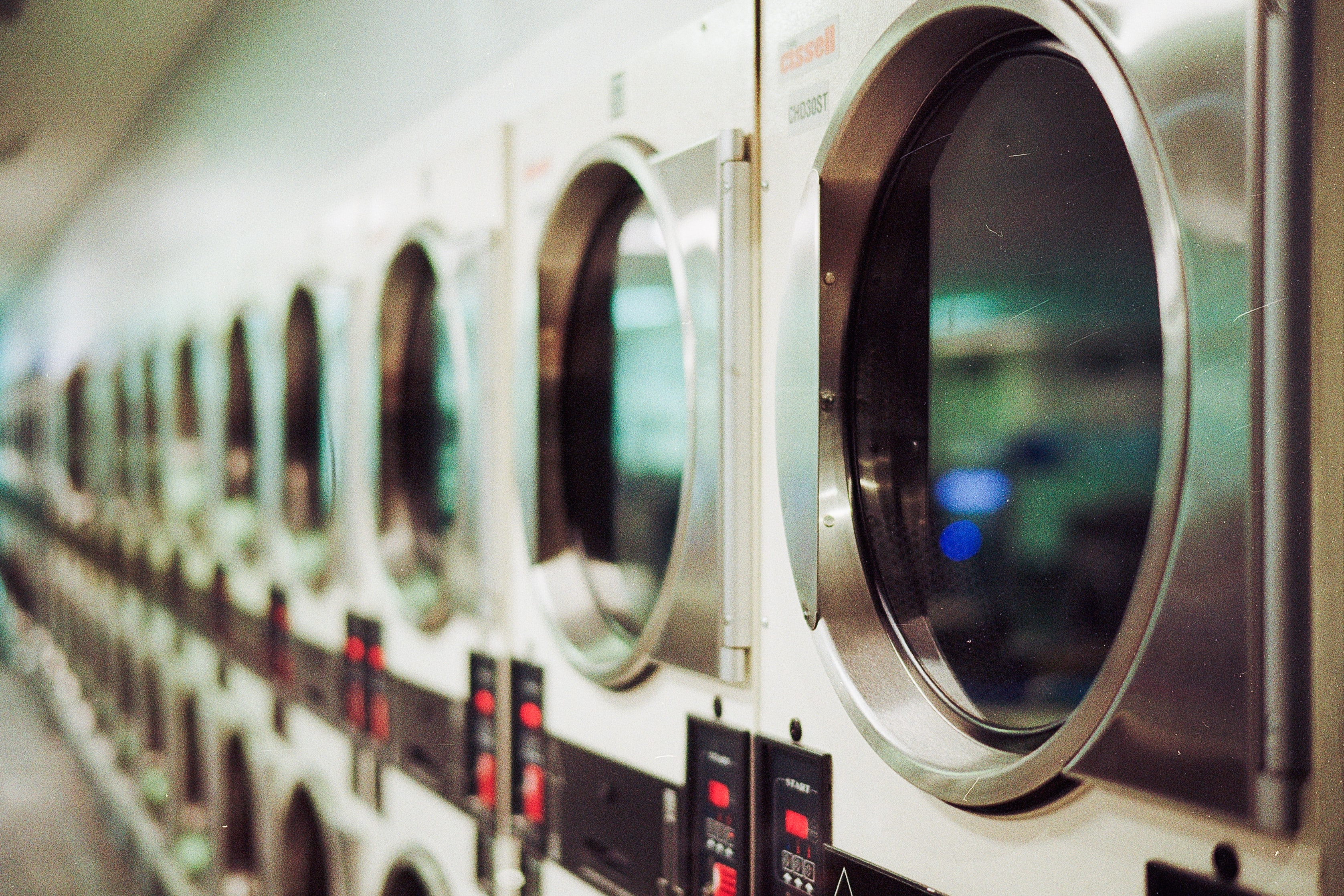Microplastics: The smallest things have the biggest impact

We hear about microplastics all the time, but what are they, and what impact are they having on our natural environment? Guest blogger Gemma Harris explains why microplastic pollution is one of the most urgent environmental emergencies of our time, and how the yachting industry can take action to help eliminate the microplastic that is entering our precious oceans.
From the air we breathe to the deepest parts of the ocean, microplastics are everywhere. Less than five millimetres long – smaller than a thumbnail – these tiny but toxic pieces of plastic have been labelled by scientists as ‘microplastics’. Our overwhelming reliance on plastic means microplastics invade every aspect of our daily lives and this has come at great cost to our natural world, especially our oceans.
The plastic problem is one of the world’s most publicised environmental issues. There has been a rise in the number of awareness campaigns and the growth of grassroots organisations trying to make a difference. Much of this has been focused around macroplastics – the word used to collectively describe the larger plastic items that we typically see floating in our waters and littering shorelines. However, there is an increasing focus on microplastics, almost invisible to the human eye, and present in many of the products we use every day.
What are microplastics?
There are two ways to classify microplastics: Primary and Secondary. Primary microplastics are any plastic fragments which are less than five millimetres in size, for example microfibres from clothing. Secondary microplastics are larger plastics which have been degraded through weathering into smaller bits of plastic. Both end up in our oceans with devastating effects.
Although ocean plastics break down over time, microscopic remnants remain in the water and this is extremely toxic to marine life. Some species of marine life have been discovered to have a 100% rate of plastic ingestion, and when other larger fish, birds and ocean mammals feed on them, microplastics invade the entire marine food chain – and inevitably contaminate human food. The average person consumes up to 120,000 particles of microplastics every year. Recent studies have revealed marine plastic pollution in 100% of marine turtles, 59% of whales, 36% of seals, and 40% of seabird species examined.
Not only this, but recent research suggests that there is much more microplastic in our oceans than we first thought. Microplastics are often too small to be caught in the nets traditionally used to collect samples, so many of them go unnoticed. A December 2019 study led by Jennifer Brandon of the Scripps Institution of Oceanography used new analysis techniques to try and find these previously undetected micro-microplastics. Their findings suggest that the scale of plastic pollution in our oceans could be a million times worse than previously recorded. In May this year, a study published in the journal Environmental Pollution further supported this, concluding that microplastic pollution in oceans has been vastly underestimated. The study suggests that microplastic particles may outnumber zooplankton, the organisms which underpin all marine life.
Microplastic pollution spans the globe and is found even in the remotest parts of the world, from the Alps and the Arctic to the depths of the Mariana Trench in the Pacific. This threat is more urgent than ever.
Where do microplastics come from?
Look almost anywhere and you’re likely to find microplastics. It’s not just in all the plastic products you use; it’s in your toothpaste, your take away coffee cup, your favourite jumper. Microplastics originate from a variety of sources. Synthetic fabrics such as polyester and nylon account for 35% of microplastics – as they shed tiny plastic fibres during the washing process. Every second, laundry water is adding two billion microplastic fibres into Europe’s waters alone.
Other sources of microplastics include city dust, tires and road markings. Second to synthetic textiles, tires contribute 28% of all the primary microplastics in the oceans.
Within the yachting industry the biggest contributor to ocean microplastic waste is discarded laundry water. The industry also contributes to the microplastics that arise from personal cosmetic care products, which make up 2% of ocean microplastic. A lot of these products contain a type of engineered microplastic known as microbeads, which end up in wastewater and then easily pass through water filtration systems into the ocean. The industry also uses marine coatings, which make up 4% of the ocean’s microplastic pollution. Both weathering and spills during application of these coatings can cause the release of microplastics. The industry is making changes to address this, but there is a lot more we can do.
What changes can the yachting industry make?
The yachting industry completely relies on the health of our oceans, therefore it is fundamental that it makes significant changes to reduce its contribution to microplastic pollution, both on an individual and industry-wide level.
Addressing the microplastic problem is twofold. Firstly, we need to work towards the elimination of single-use plastic across the industry as this is what eventually adds to the microplastic waste that enters our oceans. Secondly, we need to reduce the number of products and processes that shed primary microplastics.
Given the impact of synthetic textiles, this is an important area of focus when trying to reduce microplastics in the industry. People across the yachting industry and beyond can make small, easy changes to their practices, and the products they use. For example:
- Wastewater management: Implementing filters within waste tanks and managing the way that waste is removed from the yacht; ensuring it is removed responsibly and doesn’t end up in the ocean.
- Adapt laundry practices: Using products that collect the fibres shed by synthetic clothing during washing. Products available include the Cora Ball and Guppyfriend. Use filters which attach directly to the washing machine, such as Filtrol. Try to air dry clothing as much as possible onboard to reduce tumble dryer usage.
- Choose environmentally friendly products: Ensure that you source environmentally friendly laundry and personal care/cosmetic products onboard.
- Make sustainable uniform choices: Find an alternative to synthetic fibres, choose crew clothing that is made of natural fibres.
When it comes to making a change within any industry, one of the most effective ways to do so is through education and awareness. Initiatives like crew training can help to change habits and attitudes onboard, and sharing learning with other yachts and crews through major yachting events and social media means this cultural change echoes across the whole industry.
As the microplastic pollution problem climbs up the global political and cultural agenda, legislation and campaigns by non-profits are now increasingly supporting the battle against microplastics:
- The Microbead-Free Waters Act, 2015, USA
- The Plastic Soup Foundation Beat The Microbead campaign has seen 15 countries taking steps to ban microbeads since the campaign started in 2012
- EU-proposed ban on 90% of micro plastic pollutants
- The Marine Conservation Society are urging the government to fit washing machines with microfibre filters from 2024
- Clear Ocean Pact are calling upon the industry to sign up to the PACT, in particular the pledge to filter and safely dispose of all washing machine microplastic waste
How do I source alternatives to microplastics?
There are many viable alternatives already on the market, but it is not enough to just be a sustainable product. It also needs to meet the requirements of the yachting industry so it is an effective, high-quality product that is also ocean-approved.
For example, when it comes to uniform, crew require durability, UV protection, and something that is easy to maintain and wash, whilst also being stylish and comfortable.
- Ethical Yacht crew wear: A sustainable alternative to yacht crew uniform through their 100% ethical, 100% fair trade and 100% organic cotton clothing. They also give back to ocean clean-ups and research through donating 10% of profits to The Plastic Bank. They have been able to sponsor the removal of 4 tonnes of plastic so far (the equivalent of 150,000 500ml plastic bottles) from the ocean. The uniform is high quality whilst being the most sustainable of crew uniform brands.
- Crew a la mode: This clothing brand offer a range of eco-products and are working in line with various sustainability pledges such as replacing all plastic packaging with recycled cardboard. They are in the process of producing a wash care directory which enables crew to prolong the longevity of their uniforms.
There are also a number of alternatives available to help reduce microplastic waste within laundry, cleaning and cosmetic products.Ecostore, Viveco, Ecoworks Marine and Environmental Yacht Services are all companies that cater to yachts who are serious about reducing their plastic footprint.
What are people doing to increase awareness?
There have been a number of organisations, individuals and groups, aiming to raise awareness of plastic pollution and the specific impact of microplastics on our oceans. The Turn the Tide on Plastic team from the Volvo ocean race program led a widespread sample collecting and mapping campaign, even finding microplastic evidence at Point Nemo, the furthest place from land on Earth. The all-women voyage, Exxpedition have built a multidisciplinary network of women who can contribute to world class scientific studies and tackle the plastic problem from a range of skillsets and perspectives. Global events like the Plastic Health Summit have also put microplastic pollution at the forefront of the environmental agenda,
Across the yachting industry, there have been many individuals and groups who are sharing their knowledge and using their platforms to influence change. Social media has been a powerful platform and there is an increasing amount of crew sharing their journey towards reducing plastic consumption onboard. This includes @the.green.stew, @thegreenstewardess, @gggreen_yachts and Facebook group Conscious Yachties.
What does the future look like?
Although the microplastic problem may seem impossible to solve, there is a huge opportunity for the yachting industry to drive and influence change. Making simple product switches and small adjustments to day-to-day operations onboard can have a real impact, and, as this knowledge is shared, the demand for more environmentally sustainable products and practices will increase. There is a growing eco-conscious community within yachting, with many willing to make the effort to change their habits and encourage others to do the same.
Be part of the change, sign the PACT today, and commit to carrying out actionable steps to put an end to the microplastic that enters our ocean. Sign up here.
